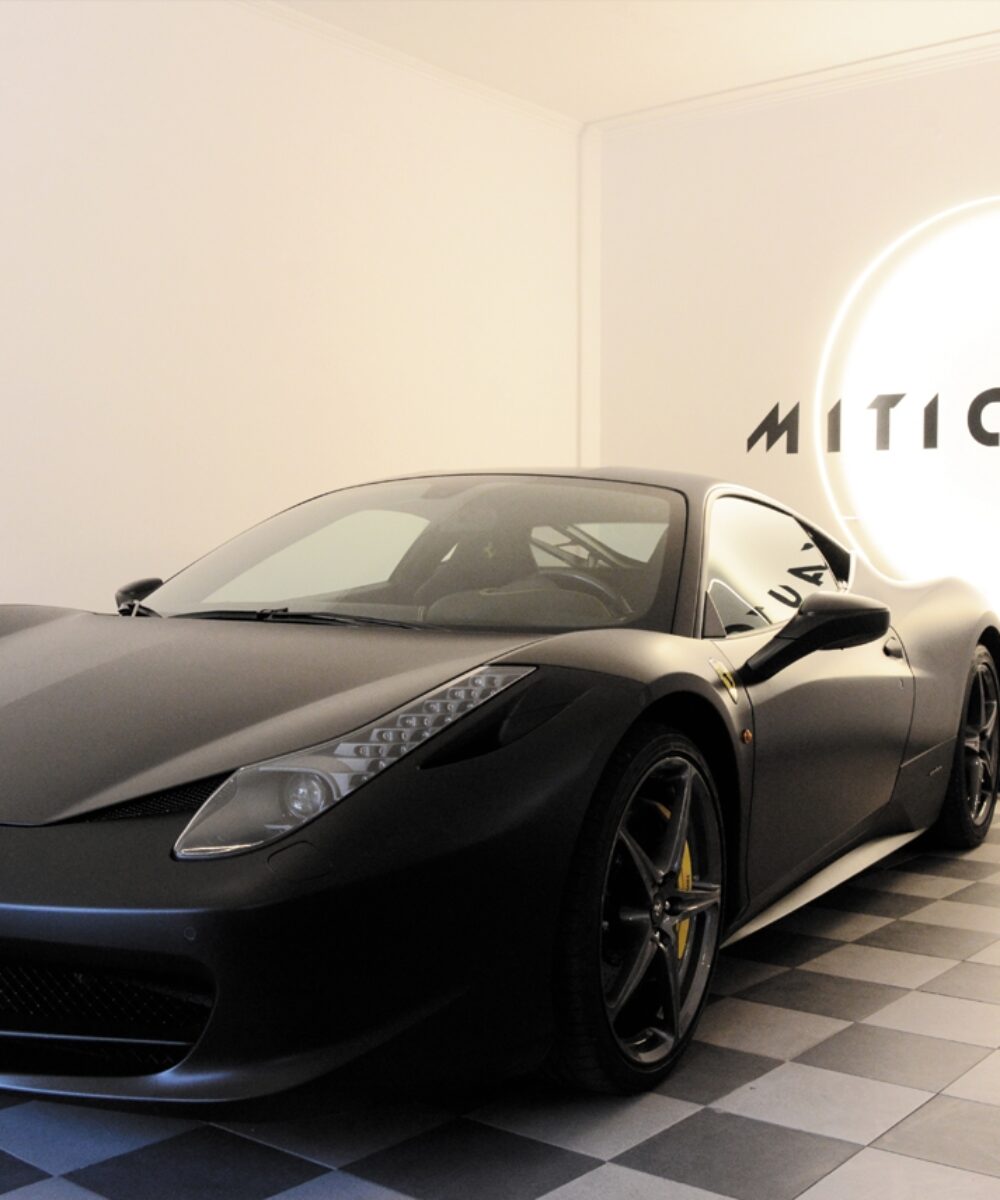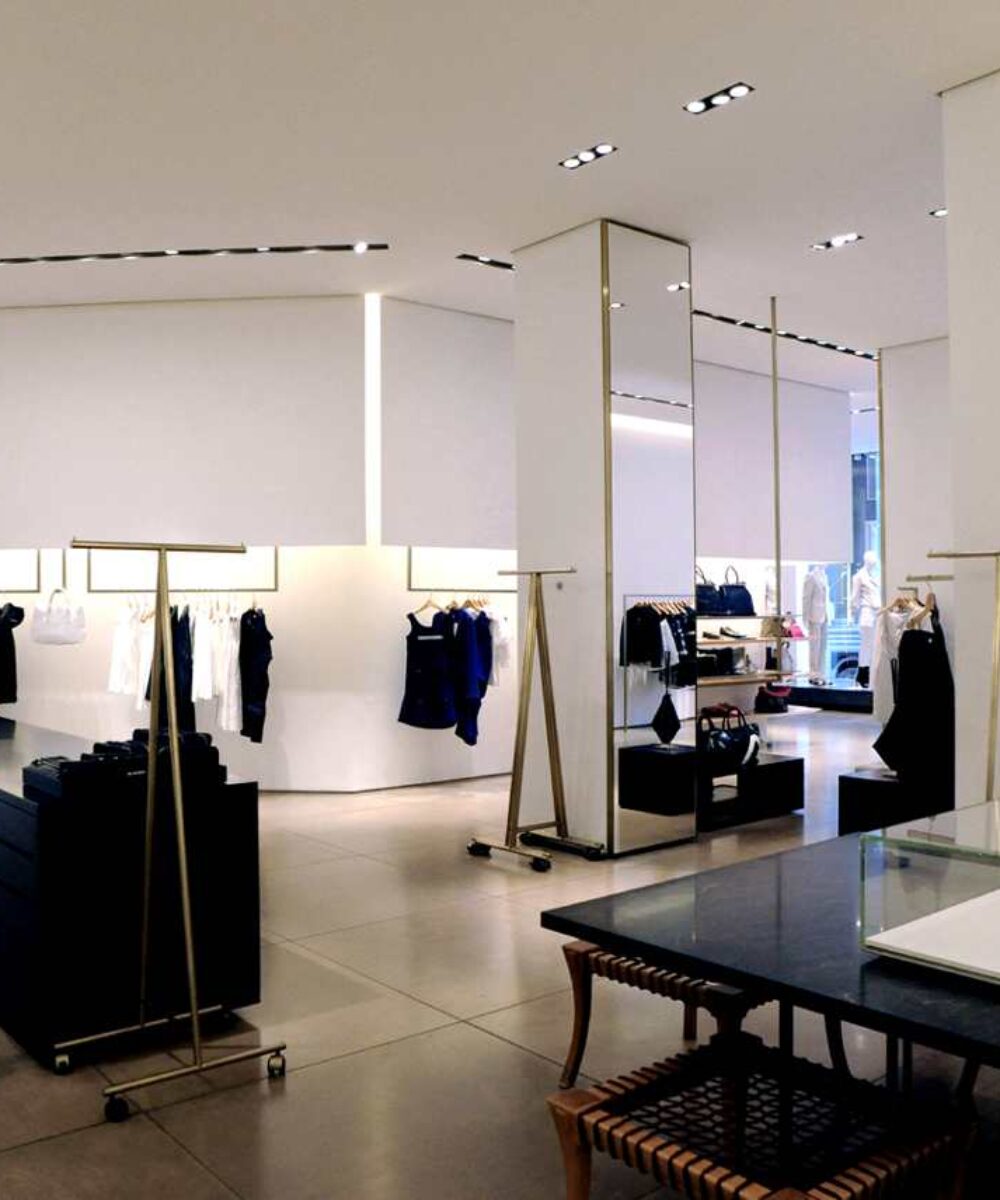Retail Lighting Design: Shop Window Lighting and Showroom Lighting
Shop window lighting contributes decisively to capturing the attention of potential customers. The flexible modulation of the light enables the free management of different configurations; the choice of color rendering enhances the materials and colors of products. Lighting design is fundamental for increasing sales and enhancing brand culture.
In addition to showroom projects, yacht lighting projects are also rightfully included in this section. Light is a factor of extreme importance, not only for aesthetic and functional reasons but also as a true marketing tool, exalting communication potential as much as possible.
Switzerland | Zurich | New Rock Showroom
Spain | Barcelona | Showroom Philipp Plein
France | Paris | Iris Showroom
Italy | Forte dei Marmi | Missoni Showroom
Switzerland | Zurich | New Rock Showroom
Spain | Barcelona | Showroom Philipp Plein
France | Paris | Iris Showroom
Italy | Forte dei Marmi | Missoni Showroom
Shop window lighting plays a fundamental role as it has the most direct and immediate relationship with the public. The light converses and interacts with the perception and behavior of customers, who are guided, attracted and seduced by the displayed objects. Lighting design makes the orientation of the interior space easier; the lighting must allow both a detailed view of the individual product and an overall view. For the purposes of visual well-being, in addition to eliminating glare, we tend to alternate areas of more and less light, creating veritable islands of brightness.
The particular morphology and the arrangement of the furniture, combined with dynamic lighting, transform the store's space into a place for exchanging and sharing emotions. The tendency is to give recognition and identity to the brand image, standardizing spaces and standardizing the interior design and lighting of all outlets. To this end, it is important to choose luminaires and light sources according to the characteristics and dimensions of the products on display. The choice of the right color temperature, color rendering and optics is also fundamental. A widespread practice in retail lighting design, with the advent of the latest generation sources, is the replacement of the current lighting fixtures with LED fixtures, in some cases without modifying the existing light circuit.
Shop Window Lighting
The Jil Sander Showroom group requested a new lighting project that led to the creation of a recessed lighting system in the false ceiling (keeping the same existing grooves). It was made up of LED-source lighting fixtures with controlled optics and high color rendering, in place of the existing halogen and metal halide lamps. In this project, the replacement of the current luminaires with LED luminaires has reaped benefits both in terms of energy consumption and maintenance, given the average lifetime of the LED sources. The spread of LED lighting equipment, which is constantly increasing, not only leads to savings in terms of watts but also in terms of "energy" watts (cooling and heating).
Retail Lighting Design
Another example of lighting in the Miticauto showroom, where the project led to the creation of a specific circular-shaped custom appliance. It all stemmed from the idea of emptiness, evoking the circles of the machines sold in the salon. The space was shaped by the illuminating body, which has become the symbol and icon of Miticauto. The circular shape has a strong magnetic power because it attracts the eye of the observer. The circle is a figure that conveys dynamism; its shape recalls immutable and perfect movement, without beginning and without end, without variation, like the light we wish to create with this lamp.
In this case, the logo consists of a lighting fixture that became the protagonist of the project. This association has other striking examples, such as that of the Luxo lamp, a design object for the home, created in Norway. It made history as the inspiration for the Pixar logo, which transformed a design object into a generational big-screen icon.
Yacht Lighting
The interior design of yachts is increasingly similar to the interior design of homes. Although they contain differences in design, today the interiors of luxury boats and private homes intertwine, generating ever new and fascinating scenarios. This is why designers from other sectors, including lighting designers, are becoming involved with greater frequency in the nautical panorama. The desire to experience everyday life both on board and at home with the same comforts and the same well-being has brought the daily routine to the yacht, without perceiving any difference or constraint.
The differences may lie in technology, engineering, and construction methods, where safety is laid down by law. Designing fixed structures and furnishings to ensure safety in spite of the movement of yachts has also generated the possibility of creating seamless designs and giving each boat a unique language and personality. Proof of this is that the Mandrake high performance racing boat, entirely in carbon fiber. This relatively small boat has an interior height of only 1.98 meters in the central part and 1.60 meters at the seats. The lighting project includes indirect light obtained through a system with LED sources built into the wood paneling and hidden from view.










